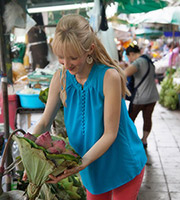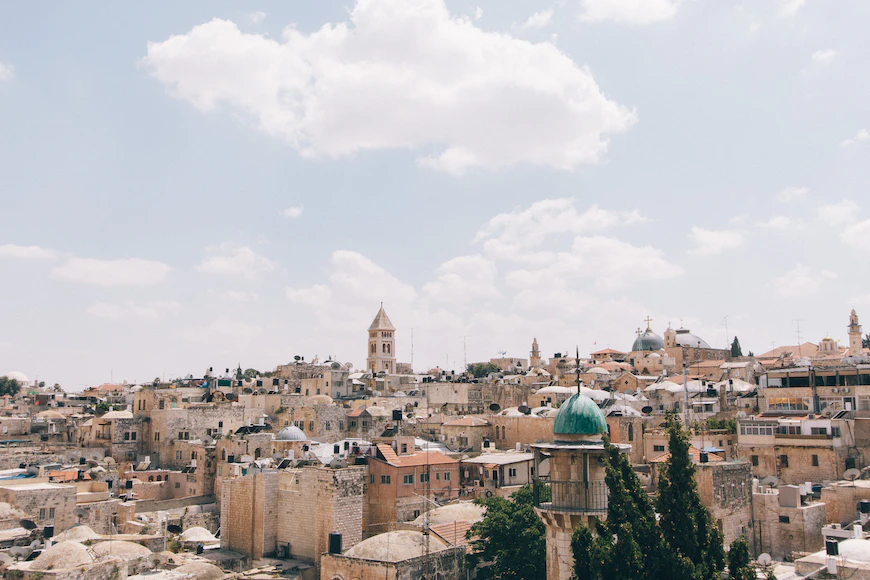
Over the New Year holiday, we made a last-minute decision to take a trip to the Old City of Jerusalem (see my short reel here). So many friends were surprised about how we pulled this together in just a couple of days before leaving, so I wanted to give you all our best tips to use for planning a trip of your own!
Getting There
We traveled to Tel Aviv from Cyprus (Larnaca) via Wizz Air, which is shockingly inexpensive if you book in advance. Flights are as low as €23.99 each way, if you don’t check a bag. Once you get to Tel Aviv, you can take a bus or train to Jerusalem. Immigration no longer stamps passport pages, but instead, you use a self-service machine to scan your passport and a little paper “ticket” comes out, which is your visa. Do not lose this piece of paper! You will need it to progress further through immigration and to baggage claim, and can be asked to present it at any time while you are in the territory.
We opted to take a taxi into the Old City (which we arranged through our hotel), simply due to the ease and comfort. Taxis accept both cash and credit cards.
Accommodation
This was my biggest challenge in planning the trip. We were arriving on December 31st, and hotel prices online were shockingly high. I had the goal to stay in the walled Old City, as that’s where most of the sites I wanted us to visit were located, and I didn’t want us to have to take taxis or cross busy roads, walk long distances in case of bad weather, etc. I decided to put us in the Christian Quarter, and we stayed at a hotel owned by the Greek Patriarchate – The New Imperial Hotel. The location was simply unbeatable – just inside Jaffa Gate, within easy walking distance to the Church of the Holy Sepulchre (you could hear the bells from our room), and it felt safe and secure. The rooms left a bit to be desired for the price, but overall I would stay here again just due to the convenient location. The rooftop is accessible and provides an unparalleled view of the surrounding area. Breakfast was included for the price of the booking, which seemed unusual when I was searching for our accommodation – most places I looked at charged a good amount for breakfast per person, in addition to the room charge itself. There were free maps of the Old City at the reception desk, which was helpful since we didn’t have time to purchase a guide book before arriving.
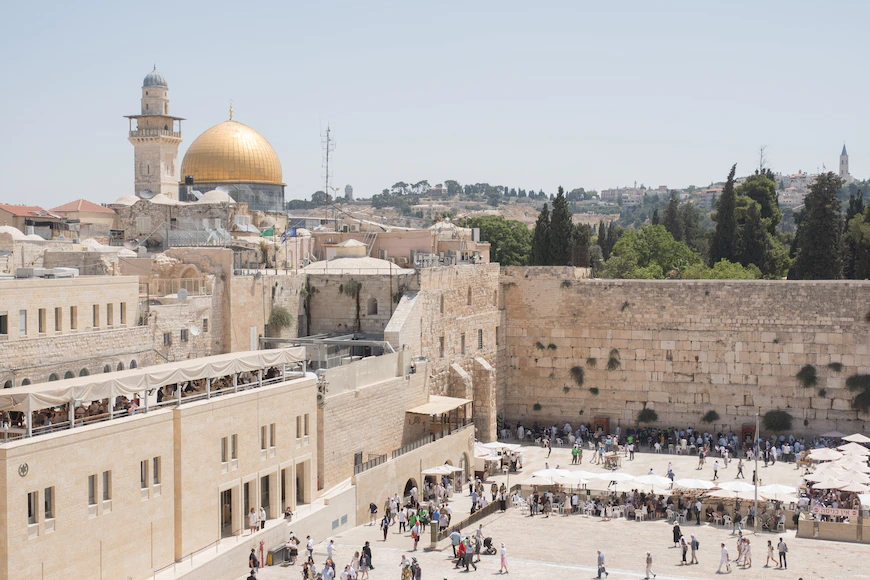
The Western Wall or Kotel
We made several missteps when visiting the Western Wall, simply from our lack time to carry out proper research. As the first site we visited after dropping our bags at our hotel, we initially failed to realize that men and women have different prayer areas – women are on the right if you are facing the wall, and men on the left. In addition, men must have their head covered. Disposable, single-use kippahs are available if you did not bring your own. There are washing areas to cleanse your hands before going up to the wall for prayer: turn on the taps and fill up the bronze cups that are tethered to the spouts, then simply pour the water over your hands.
Near to the wall are plastic chairs, and the faithful wait their turn for a spot at the wall. Prayer books can be purchased from a vending machine in the area. When leaving the vicinity, women were walking backwards away from the wall so as not to turn their back on it, but I didn’t notice men doing the same.
You can take various tours of the tunnels under Old Jerusalem from an entrance adjacent to the Western Wall, although it is recommended to purchase tickets ahead of time through this website, as they are quite often sold out in advance. We faced this problem, but were able to do the virtual reality tour of the Second Temple. I highly recommend this if you have children, as it is often difficult for them to imagine the great scale of the Temple, so being able to virtually stand among the towering walls is really an eye-opening experience for them.
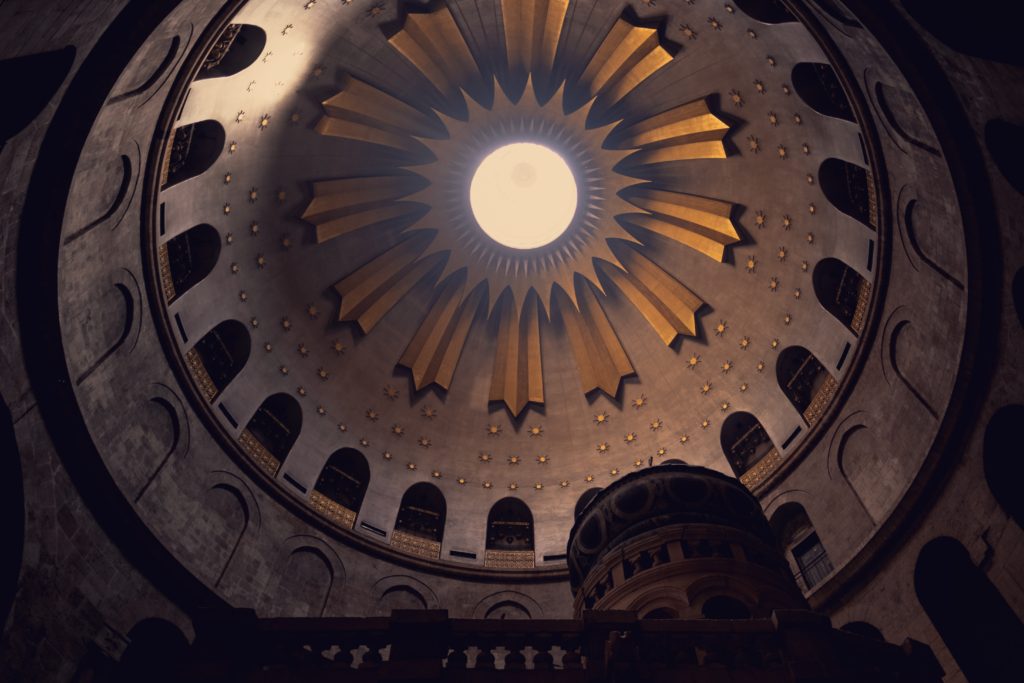
The Church of the Holy Sepulchure
As a life-long Christian, and an Orthodox Christian in particular for over 20 years now, this was obviously the site that drove me to want to come to Jerusalem. I wish I had done more reading ahead of the trip, but with our last-minute booking, there just wasn’t enough time. In the 48 hours we were in the city, we went to the church three separate times – once each day.
The first visit was in the late afternoon, around 5:00pm, on a Friday. The church complex houses numerous stations of religious significance, and the entire area was fairly crowded with tourists, although I suspect way less than there would be in the summer (after this trip, there is no way that someone could convince me to visit the city at the height of tourist season). As you enter the church, you are confronted by a stone slab that is believed to be where Jesus’ body was prepared for burial (“Stone of Annointing”). It was consumed by people on all sides. Upstairs is the site of Golgotha, Christ’s crucifixion. When we arrived, a vesperal-type service was starting on the Greek side (the area upstairs is divided into two small chapels – Greek Orthodox and Catholic). It was a nice surprise to attend the service, and despite being crowded, we were the only Orthodox worshippers there at the time. It felt like “home”!
When we made our way to the rotunda, and the “Aedicule,” the small building that houses the tomb of Christ, there was a very long line which snaked around the rotunda area. It was evident that there would be a substantially long waiting time, so we decided to abandon our plans to see the tomb and to come back the next morning.
Saturday morning we set out for the Church at around 7:30am. This was absolute perfection in timing – there were only 4-5 people waiting to get into the Aedicule. Despite the lack of pilgrims, the monk in charge was very pushy and only allowed us in for a few seconds before nearly pushing us back out again. Photography is not allowed in the structure. Be prepared to only spend seconds inside, so it’s a bit of a “speed veneration” situation.
Sunday morning we went back very early, again. Orthros is in the Greek Church, directly across from the Aedicule, and begins around 7am, followed by liturgy (this is only on Sunday mornings for this section of the complex). We used this time to explore the chapel of St. Helena area downstairs, specifically to look for the graffiti which covers a lot of the stairwell walls and the Armenian chapel. Again, almost no one was in the church complex. I would highly recommend this strategy of going bright and early in the morning. You can attend services and spend some quiet time in the complex area, and then go get breakfast and a coffee afterwards!
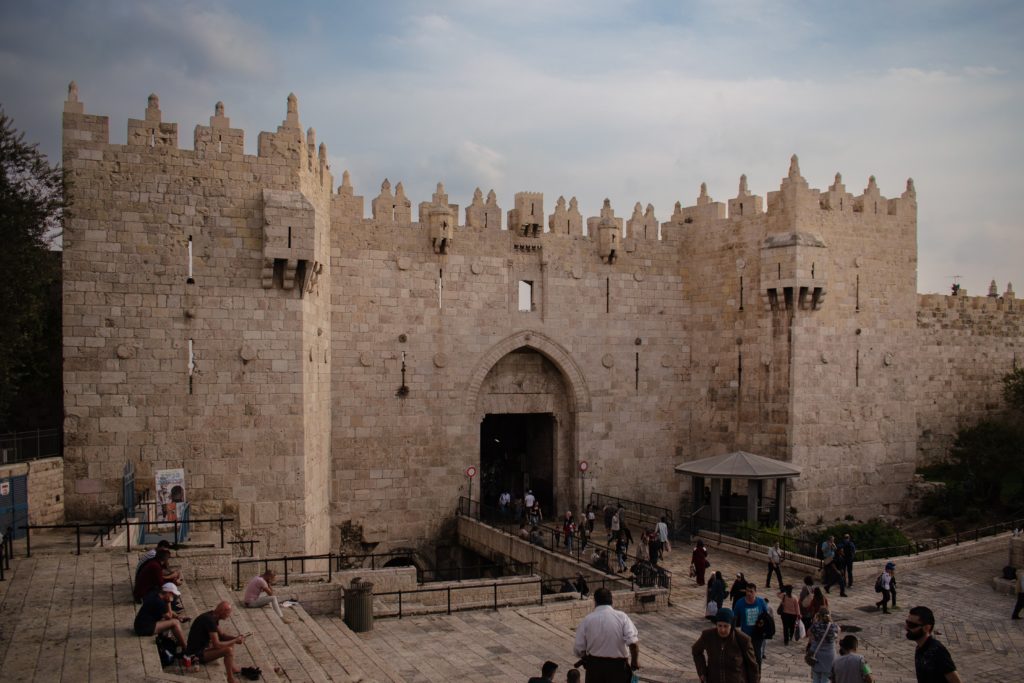
The Tower of David
The Tower of David is located right at the Jaffa Gate – you can’t miss it. The walled fort is one of those “structures built on top of structures” type of site, as is common with ancient citadels. You can take guided tours, or just roam around at your leisure on your own. In addition, there is some sort of light show at night, and although we did not attend it, we could see and hear it from our hotel.
Something that I found really interesting in the Tower grounds were physical models of the Old City at different points in history. It’s interesting to see the city’s geographical expansion from ancient to medieval all the way through to modern times.
You are able to walk on top of one of the walls of the complex, which then merges into the Old City wall, and it appears that it takes you all the way across to the Garden of Gethsemane area – quite a distance and with a bird’s eye vantage point! We opted to “disembark” about halfway to Gethsemane due to hunger and child exhaustion, though. Prep yourself with food, water and an empty bladder beforehand if you would like to do this walk.
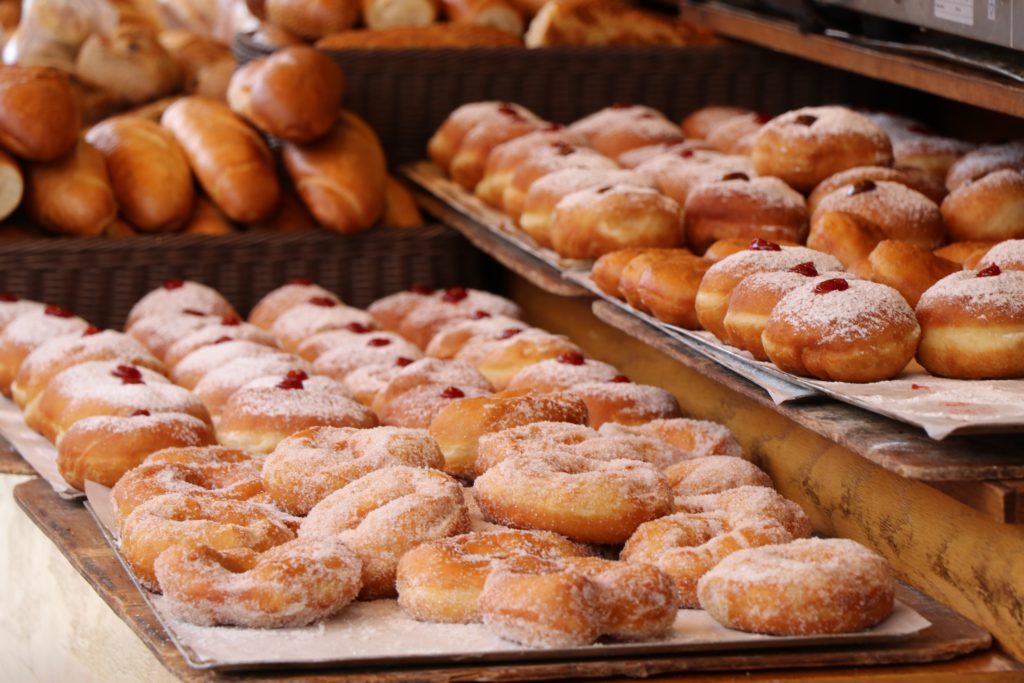
Get Lost in the Quarters
Be sure to take some time roaming the different quarters of the Old City with no particular destination or agenda! The Muslim Quarter is known for the best markets, if you are looking to buy souvenirs. The Jewish Quarter is worth a visit, and you can stop off at a bakery for traditional kosher treats or lunch on the go. My favorite area was the Armenian Quarter. It’s quiet streets and the lack of hawkers made for a peaceful walk and was a perfect place to get lost. We did not make time to enjoy a meal at the Armenian restaurant next to the Patriarchate, but I wish we would have. A site of special interest in the Armenian Quarter is the Syriac Orthodox Monastery and Church of St. Mark. This building is believed to be the house of the mother of St. Mark the Evangelist, the place where the Last Supper was held (upstairs), and the first church in Christendom. You can find it on Google Maps here.
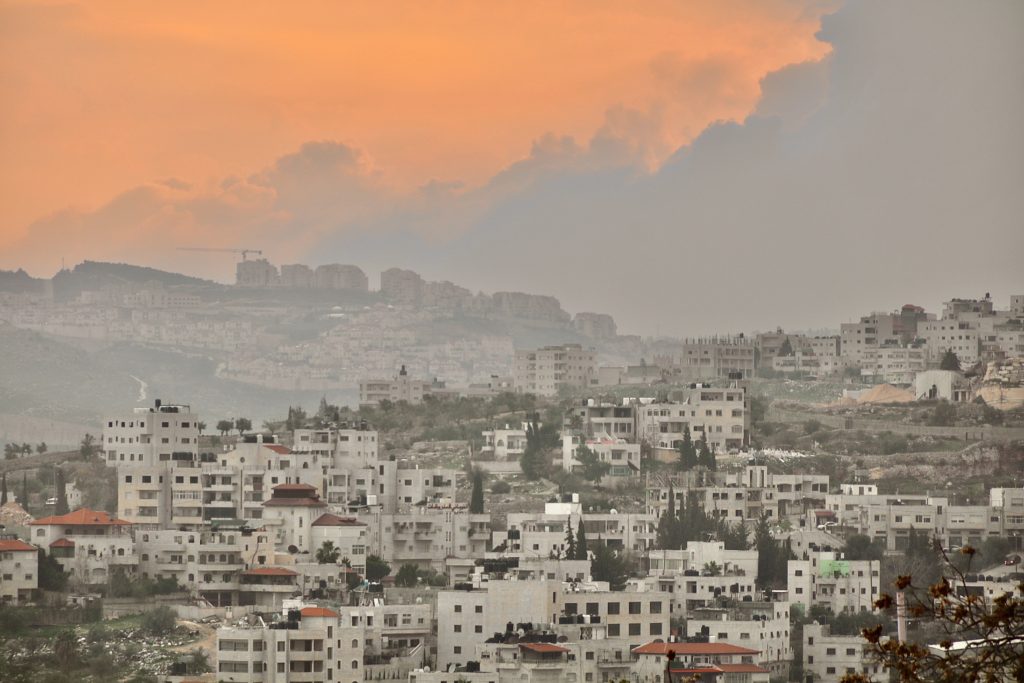
Bethlehem (The Church of the Nativity)
Though we were only in the area for 48 hours, we decided that we should get to Bethlehem to see the Church of the Nativity, the believed birth-place of Christ. This is a bit of an undertaking and you should be prepared to block off half a day for this excursion. We used the same taxi driver that took us from Tel Aviv airport to our hotel. REMEMBER TO BRING YOUR PASSPORTS AND YOUR VISA PAPER! We were a good way along our journey when our taxi driver mentioned this…and our passports and visas were back in our hotel. We made it through the checkpoints to Bethlehem without being stopped, but were stopped coming back into Israeli territory. The officer asked to see us, the taxi driver opened the door of the minivan we were in, and we were asked where we were from. I led with a boisterous, “America!” (this is the first trip we have ever taken where I was the leading nationality – we usually keep me quiet and just pretend we are all from Scotland to keep the peace), and the officer showed off his M-16 to, asking the boy if he had ever seen one before. It was a bit tense for us, but all smiles from the officer, and away we went, without having to show any passports or visas, thanks to God!
Our taxi driver dropped us off at the Church and told us he would come back to pick us up in an hour. He instructed us to enter the church on the left side, as the line to go back behind the alter area where the actual birthplace of Christ is somehow shorter on that side. We did enter where he suggested, and the Palestinian officer guarding that door was asking where people were from, seemingly only allowing certain nationalities to enter. We filed in behind an American tour group, keeping a low profile. Once entering the beautiful church, which is operated by the Greek Patriarchate, there was an astonighingly long line to see the birthplace area. There is no way that we would be through it in the hour that the taxi driver was giving us. There is also no way that Fergus would have managed the wait. A tour guide “shark” approached us immediately – we were fresh meat! He offered to get us in through the fast-track for guided families for a fee. We decided to accept, as it was now or never for us, and he took us straight to the door, spoke with the priest monk in charge, and they let us through along with some other pilgrims. Once we came out, the guide helped us to submit our names for prayers, showed us a few things of interest in and around the church, and we made it back to our taxi in perfect timing.
It all felt rushed, but I guess that’s how it is, with so many people every day of the year clamoring to see the holy sites. It’s difficult to really let things sink in when you are only given a few seconds to venerate and see the places of significance. I think the realization of what has happened only truly hits you after you return back home.
In Summary
We had a wonderful experience on this trip, and I found myself wondering why on earth we had not done this before. There were always excuses – Covid lockdowns and restrictions preventing us from travelling, worrying about safety, feeling it would be too expensive, thinking our son was still too young to gain much from the journey… Looking back, we just should have gone for it. I definitely want to return – there is just too much to see and experience, but I am very thankful that we were fortunate enough to make this short trip at this time. If we make it back, I will be sure to do more reading and research prior to our arrival, and will attempt to stay longer than we did this time. I hope these tips will help you on your own future trip to the Old City of Jerusalem!
Happy travels!
Photos from Unsplash by Robert Bye, Anton Mislawsky, Levi Meir Clancy, and Elisheva Gohar, and Jorge Fernandez Salas.

